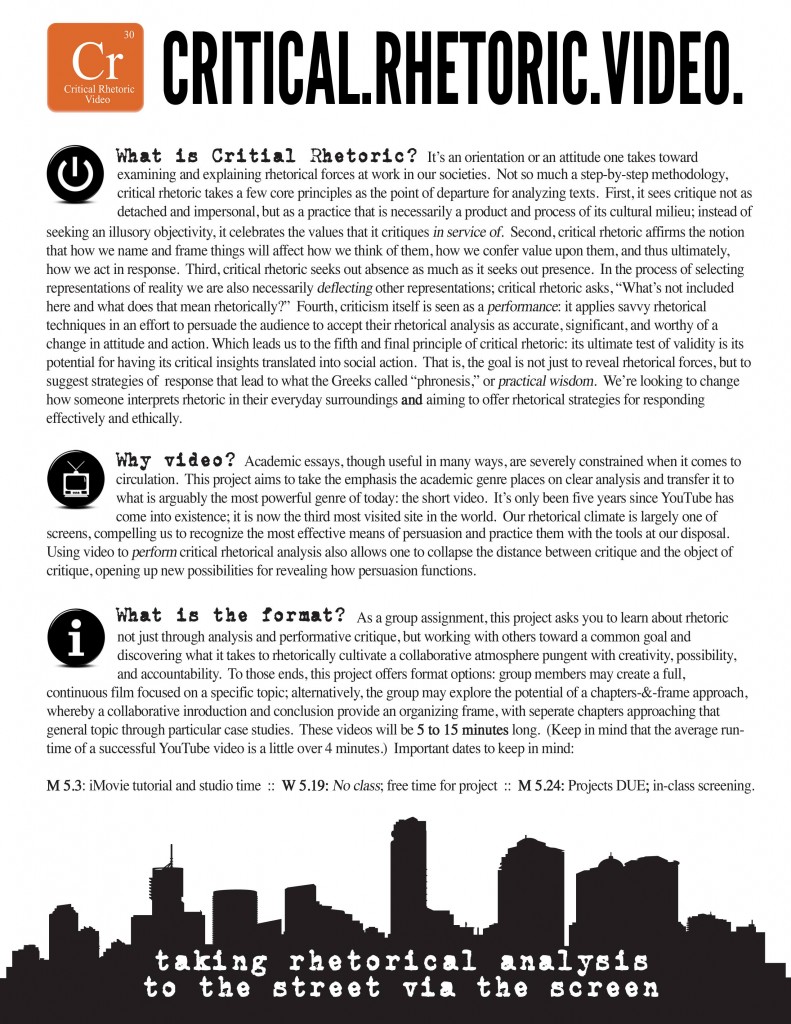Right now there are a gaggle of imaginative and intelligent students at Ohio State working on Critical Rhetoric Videos, an assignment that takes Raymie McKerrow’s concept of “Critical Rhetoric,” but uses digital video instead of print to perform the critique.
In attempting to better identify which rhetorical appeals will work best for their target demographic (mostly those between the ages of 19 and 26), we consistently come back to humor. This has me contemplating the potential value of a “precursor project”–more specifically, a parodic precursor–that would focus on the strategic use of humor before moving on to a project like the Critical Rhetoric Video.
So I thought I would share with you some great examples of parody, a term the Greeks used to describe works that imitated the epics in humorous fashion, poking fun at the style of master narratives. (Just consider the etymology: para (along side of) + ode (as in “lyrical ballad”).)
These examples are astounding for their efficiency in revealing the rhetorical structures of the genre they’re poking fun at, while engaging the audience with their own set of smooth rhetorical maneuvers:
(thanks to Alex Speck, who tipped me off to this bit-o-genius)
(thanks to Kendyl Meadows for this one)
(thanks to Kate Comer for finding this hilarity)

